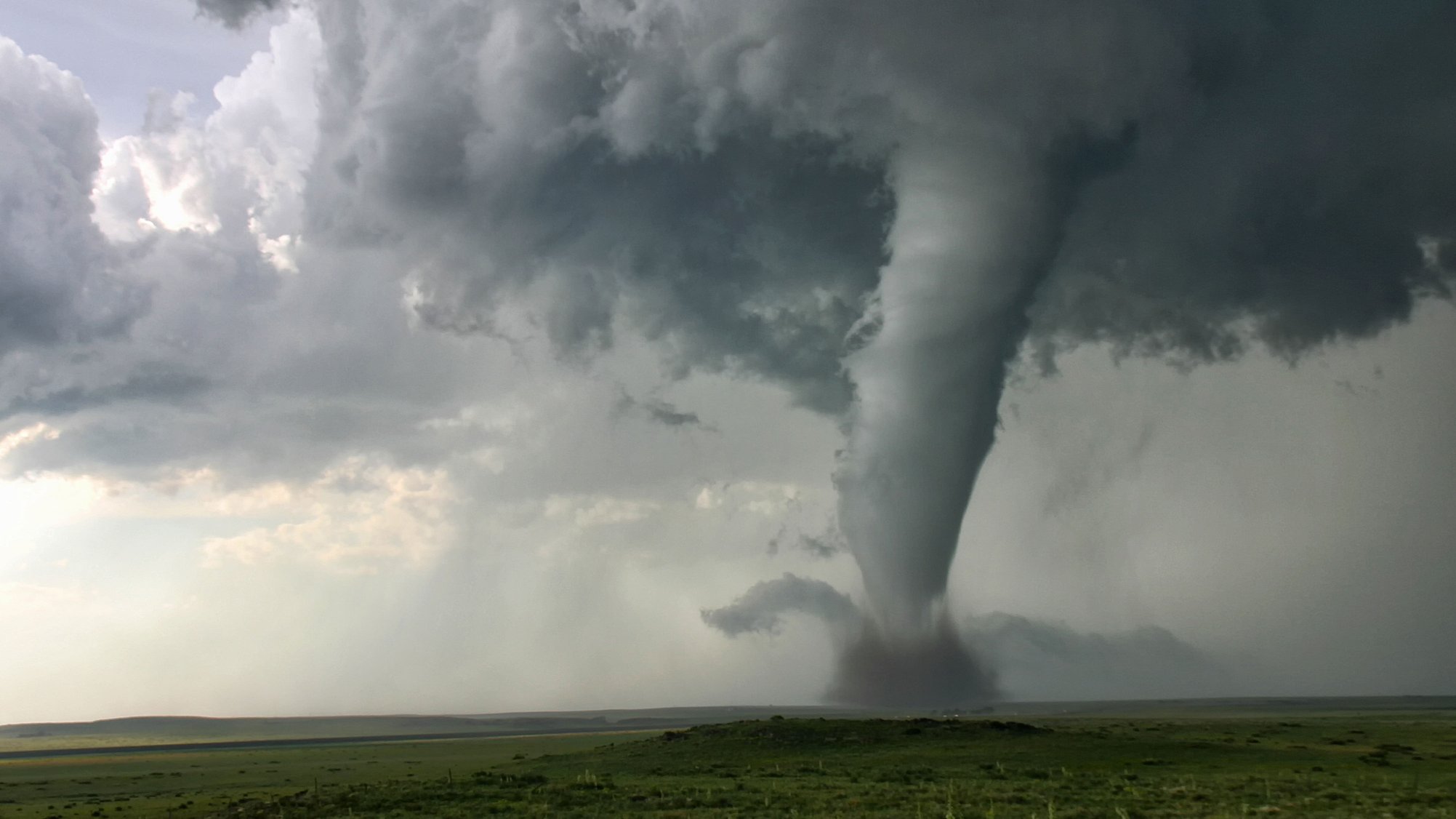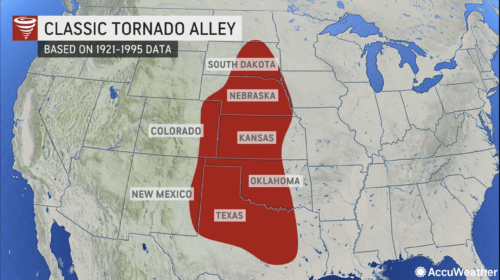
Tornado Alley is known for having a more intense and significant number of tornadoes than other parts of the country.
Tornado Alley is a part of the United States with the high potential for tornado development
The area is most active from April to June
30% of all confirmed tornadoes have happened in Tornado Alley since 1950
Where is Tornado Alley?
Tornado Alley is a part of the central United States with a unique combination of geographic and meteorological factors that make it more susceptible to tornadoes. This area encompasses much of northern Texas northward through Oklahoma, Kansas, and Missouri and parts of Louisiana, Iowa, Nebraska, and eastern Colorado.
While it’s known for having a higher frequency and intensity of tornadoes than other parts of the country, it is essential to remember that tornadoes can occur anywhere.

Why do more tornadoes happen in this area?
Warm, moist air from the Gulf of Mexico meets cold, dry air from Canada in the heart of the United States. As a result, it creates a volatile mix of weather conditions, which can produce intense thunderstorms, hail, and tornadoes. According to AccuWeather Meteorologist Dan Kottlowski, the dry air actually originates from the Mexican Plateau and is guided northward just east of the southern and central Rockies. The air remains elevated, causing a temperature inversion over the northward-advancing moist, unstable air from the Gulf of Mexico.
Tornado Alley is most active from April to June, but Kottlowski says the ingredients start to come together for activity toward late February and March. In fact, during the first three months of 2023, we saw several tornado outbreaks, including one that spawned an EF-4 tornado in Mississippi. Despite covering only 15 percent of the U.S., 30 percent of all confirmed tornadoes have happened in Tornado Alley since 1950. Some evidence suggests that the boundaries of Tornado Alley may be shifting. While traditionally, the core area of Tornado Alley is in the central U.S., research shows that tornado activity may be increasing in other areas, including the southern U.S.
Courtesy of Adrianne Burke, Accuweather.com









